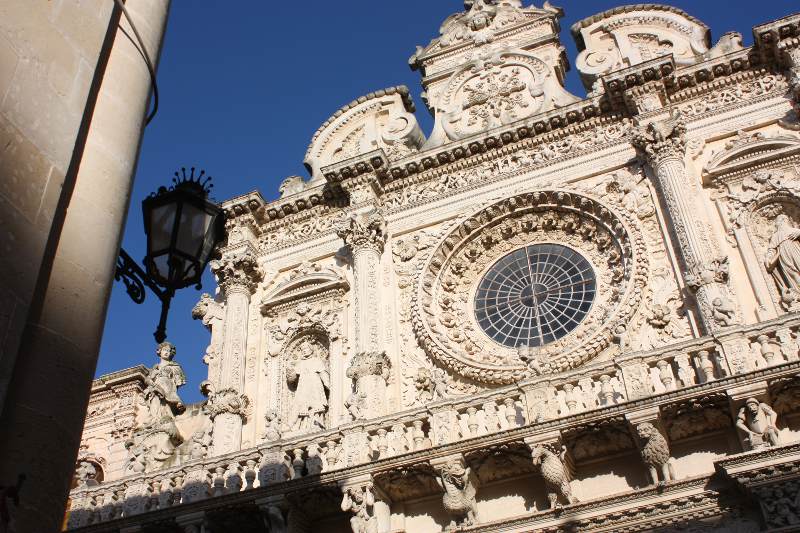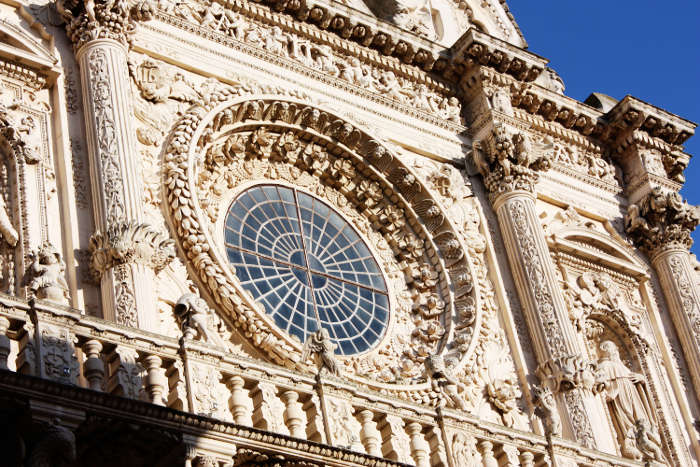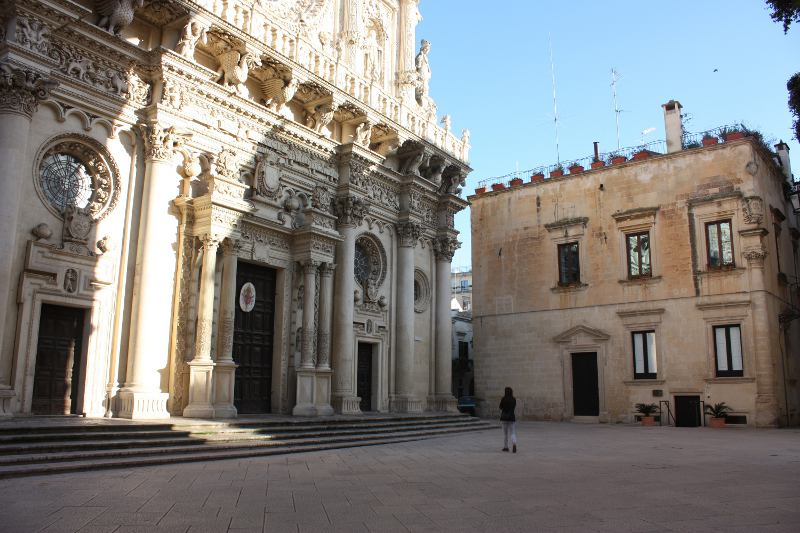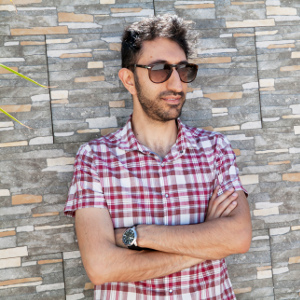One of the most beautiful places to see in Lecce in Salento, Puglia, is the Basilica of Santa Croce. The first thing that strikes me, before I start to describe it, is the surprise. From Piazza Sant’Oronzo you take Via Templari, you walk for a few metres and all of a sudden, as if by magic, right in front of you, there, in all its magnificence, stands one of the finest examples of Baroque architecture in the Salento, Apulia. The Basilica of Santa Croce is a real surprise for those who have never seen it. Its construction began in 1549 and finished about a century later, in 1646. It is the creation of three architects who succeeded one another over the course of time: Gabriele Riccardi, Francesco Antonio Zimbalo and Cesare Penna.
The facade of the Basilica of Santa Croce
It is the facade that I, personally, like the most and its magnificence will also touch you. The upper part of the prospectus is by Caesar Penna, it is the most lavishly decorated, with a balcony which is held up by figures such as lions, griffins, dragons, symbols, columns, … At the centre, there is a marvelous Romanesque rose window, with a baroque ring with bay leaves and berries. On either side of the rose window, there are two Corinthian columns which separate the central area from the side where there are niches with statues of St. Benedict and Pope Celestine V. On either side of the front, however, stand two large statues of women, symbolizing Faith and Fortitude. The facade is closed at the top of the gable, with the cross in the center. According to some scholars, the plan of the decorations of the facade is connected to a celebration of the victory at the Battle of Lepanto in 1571. In this battle, the Western powers defeated the Ottoman Empire, which led to great economic and commercial benefits for all Salento, then known as Terra d’Otranto, which had previously been constantly under siege by the Saracens. The male faces (telamons) dressed as Turks are a reminder of the prisoners captured by the powerful Venetian fleet during the battle. Not surprisingly, the division of the spoils of the captured enemies took place here in Southern Puglia, near the shrine of Santa Maria di Leuca. By contrast, the animals depicted in the balustrade alluded to the allied Christian powers: the dragon was the symbol of the Buoncompagni, family of which Pope Gregory XIII was a member, the griffin symbolizes Genoa, the Hercules, the Grand Duke of Tuscany, … This facade is a historical spectacle, believe me!
The interior of the Basilica of Santa Croce
Gabriele Riccardi designed the general structure of the church and the facade in its lower part, he worked on what was already a long-established place of worship. The interior has classic lines and decorations which were added during the following centuries, medallions, garlands of laurel and curls of acanthus. The Basilica is a Latin cross, originally with five aisles. Later, two aisles were turned into side chapels. The high altar you see today, once stood in the church of Saints Niccolò and Cataldo from which it was removed in 1956. Very beautiful paintings can be seen along the walls: the Adoration of the Shepherds, the Annunciation, the Visitation of Mary to St. Elizabeth, the rest on the Flight into Egypt. Looking up at the top, however, you will notice the wooden ceiling which was rebuilt in 1800 and the original design of the dome from 1590. Music lovers will love the pipe organ built by Ruffatti in 1961 located in the presbytery.
Curiosities in the Basilica of Santa Croce
1) The self-portrait of Antonio Zimbalo. It’s hard to see unless someone tells you it’s there (like I’m doing now), but the facade has a legend depicted in all his baroque beauty – a self-portrait by Antonio Zimbalo. To see this, look at the rose window in the centre and from there turn to the left until nine o’clock.
2) The Basilica in the nineteenth century. Another curiosity is the approach from the city towards the Basilica. In the early nineteenth century, in fact, the Basilica was very much opposed by critics of the place. Its whole elaborate and opulent story was frowned upon, sometimes it was seen as ridiculous and in bad taste. It was only in the twentieth century that the Basilica began to be appreciated again and several studies on it were published, paying particular attention to the complexity of the symbolism of the facade. Today, however, the Basilica has become the symbol of the city of Lecce, probably its architectural gem.
3) The most beautiful Baroque altar. Inside the Basilica there is what is regarded as the highest expression of Baroque sculpture in Salento. This is the altar dedicated to St. Francis of Paola, a masterpiece by Francesco Antonio Zimbalo who built it between 1614 and 1615. It is located in the left transept. And just think that the whole church has sixteen baroque altars!
Looking forward to seeing you in Lecce …














